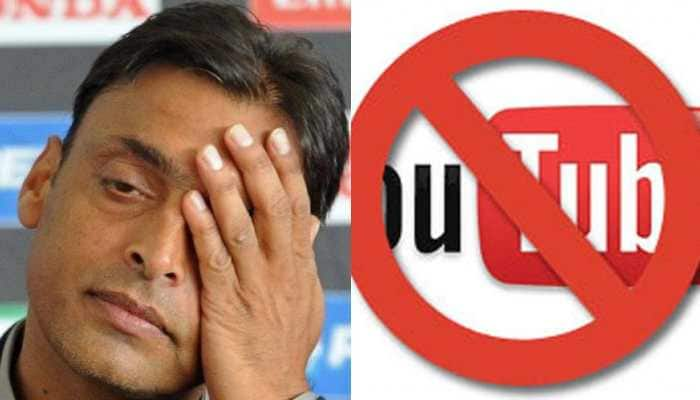In the aftermath of the tragic Pahalgam terror attack on April 22, 2025, which claimed 26 innocent lives, India has escalated its response by banning several Pakistani YouTube channels, including that of former cricketer Shoaib Akhtar. The government’s move is part of a broader crackdown aimed at curbing the spread of provocative content and misinformation that has followed the attack. The bans impact a range of influential Pakistani media platforms, including major news outlets like Dawn News, ARY News, and Geo News.
The brutal attack in Pahalgam, located in Jammu and Kashmir’s picturesque Baisaran Valley, shocked the nation. Armed militants opened fire on a group of tourists, resulting in a devastating loss of life. This assault has not only heightened tensions between India and Pakistan but has also led to heightened scrutiny of the narratives being propagated by certain media channels. In the wake of this attack, the Indian government moved decisively to block YouTube channels deemed to be spreading inflammatory and misleading content.
Among the high-profile casualties of this crackdown is Shoaib Akhtar’s own YouTube channel, “100mph.” The former Pakistani cricketer, widely known for his blistering pace on the field, had amassed a substantial following on his channel, which featured analysis, commentary, and occasional interviews related to cricket. Akhtar, who is often outspoken in his views, has now seen his channel blocked in India, following accusations that his content, like many other Pakistani channels, was spreading false narratives that could inflame tensions between the two nations.
Shoaib Akhtar’s channel, with over 3.5 million subscribers, was just one among many others affected by this move. The channels were found to have been disseminating content that allegedly criticized the Indian Army, promoted anti-India rhetoric, and misrepresented the events surrounding the Pahalgam attack. Indian users attempting to access these channels are now greeted with a standard message from YouTube citing national security or public order concerns.
Alongside Shoaib Akhtar’s channel, India has banned a total of 16 Pakistani YouTube channels. This includes other notable news and sports platforms like Dawn News, Geo News, ARY News, and Samaa TV. With a collective subscriber base of around 63 million, these channels are highly influential among Pakistani and global audiences alike. Channels that also faced the ban include those run by prominent journalists like Irshad Bhatti, Asma Shirazi, and Umar Cheema, known for their coverage of political and social issues in Pakistan.
The action came on the recommendation of India’s Ministry of Home Affairs, which determined that these channels were guilty of spreading misinformation, especially in the wake of the Pahalgam attack. Content labeled as “provocative” and “communal” was flagged for its potential to incite violence and unrest.
The ban is part of a wider strategy by the Indian government to counter perceived attempts by certain Pakistani media outlets to influence public opinion and incite unrest. Following the Pahalgam attack, the government took several non-military measures, including suspending the Indus Waters Treaty, revoking visas for Pakistani nationals, and closing the Attari border. The ban on Pakistani YouTube channels is seen as an extension of these efforts.
In addition to the media crackdown, the Indian government has also expressed dissatisfaction with international media coverage, particularly the BBC’s description of the Pahalgam attackers as “militants.” The Indian government has strongly objected to this terminology, arguing that it downplays the severity of the attack. This has led to official correspondence with the BBC, demanding a revision of the language used in its reports.
The banning of Shoaib Akhtar’s YouTube channel and others in India reflects the increasingly complex media and political landscape in the region. As tensions remain high between India and Pakistan, both countries have resorted to using media and digital platforms as tools in their broader geopolitical struggle. While India defends its actions as necessary for national security, critics argue that these moves could further isolate the two countries, making dialogue and peaceful resolution even more difficult.
As of now, the banned Pakistani channels remain unavailable to Indian viewers, and the government has made it clear that it will continue to monitor foreign media outlets and digital platforms to ensure that no content undermines national security or public order.
For now, Shoaib Akhtar and others who run similar channels face a significant setback in their ability to communicate with Indian audiences. Whether this move will have the desired effect of curbing the spread of misinformation or exacerbate existing tensions remains to be seen. One thing is clear: the digital landscape has become yet another battleground in the ongoing India-Pakistan rivalry.








